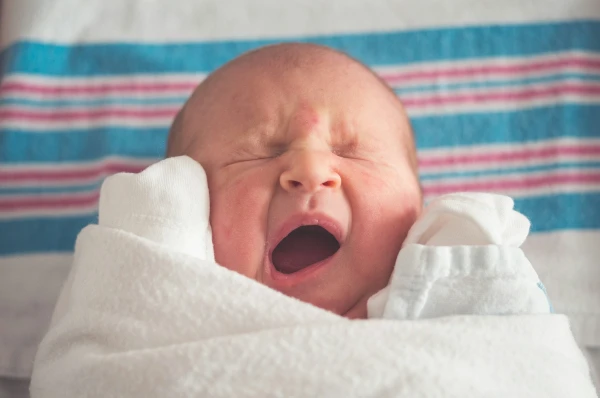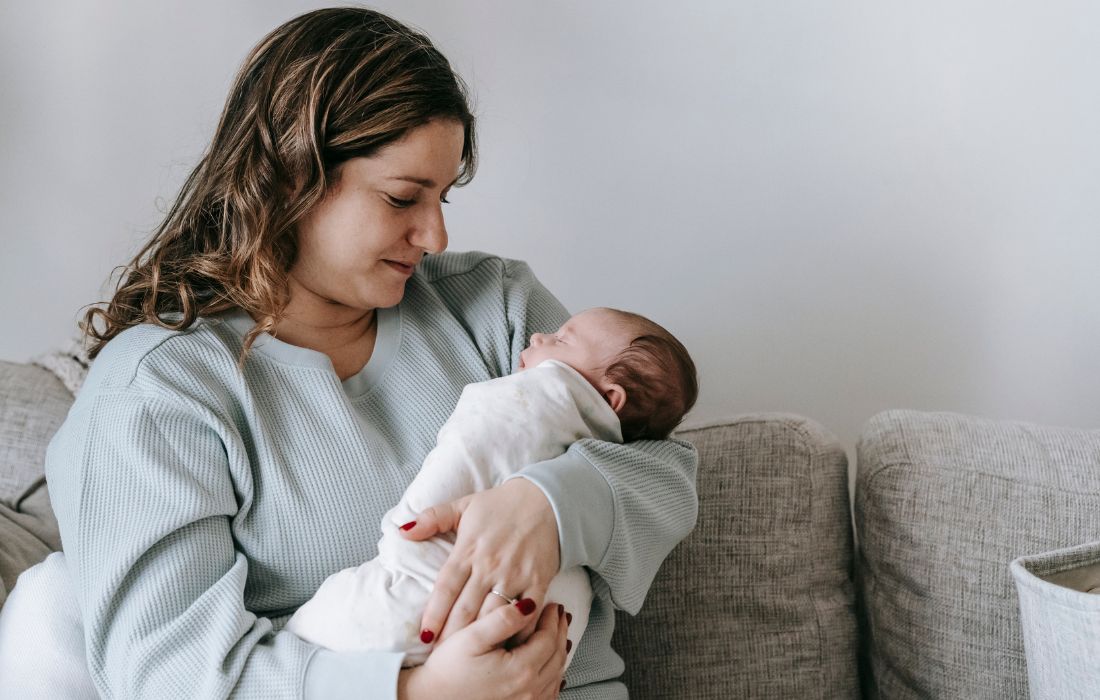As your baby gets older, you will notice some major developmental changes that usually happen between six and eight months, including crawling, the (potential) transition from three naps down to two, as well as an increase in your baby’s separation anxiety. That’s a lot of changes! Transitional objects are one way that parents can help baby feel safe and secure.
This secure bond is a positive sleep association that can help your baby during their partial awakenings. Because the transitional object does not change, it is soothing. In fact, Dr. George Askew of Zero to Three, points out that a transitional object is often an indicator of a strong parent-child bond. Essentially, the object is meeting baby’s need for love and attention even when mom or dad is not actually there. Now that’s pretty cool.
You may be wondering what a ‘transitional object’ is. Simply put, it’s a lovey. It’s that blanket that gets so dirty you have to beg to wash it, or the little stuffed animal that your baby can’t go to sleep without. Basically, a transitional object is nothing more than extra security for your growing baby.
The blanket and stuffed animal are common examples, but a transitional object doesn’t have to be either. I’ve seen babies bond with teethers, cloth diapers, or even a small soft book! The important thing to remember is that a transitional object is something that your baby bonds with, and is safe. When you are introducing a lovey, it may help to follow some simple guidelines:
Make sure that the lovey is safe.
Look for something that is small and soft. Avoid things that could pose a choking hazard or could be used as a step for climbing out of the crib later. Also, be careful of small items that could be pulled off such as eyes or a nose, since babies are deceptively strong. If you are at all in doubt, ask your pediatrician.
Use your baby’s preferences to help pick his transitional object.
From Good Night, Sleep Tight: “For instance, if he’s a hair twirler, look for a blanket with a fringe or a stuffed animal with a similar feature, like a Beanie Baby Jellyfish with tentacles. If he likes to rub and massage things, try a small thick blanket.”
Incorporate the transitional object into your baby’s (bedtime) routine.
Have the lovey be a part of your day. Use it to play peek-a-boo, or snuggle with you during feedings. Give it some personality! And (most importantly), incorporate the lovey into the bedtime and naptime routines. Maybe you kiss the lovey then baby, or just simply snuggle them in together. Just be sure it’s there.
Impart your ‘mommy’ (or daddy) smell.
When you’re first trying to introduce the item that you hope will become your baby’s new companion at night, you may want to ‘wear’ it (place it under your shirt for a few hours) to impart your smell and help baby with that comforted feeling. Another way to do this is to snuggle the lovey between you and baby during snuggly times, such as nursing or reading stories.
Reserve the use of your baby’s lovey for home use only.
Keeping your baby’s lovey in the house helps to mitigate the headache for you should it get misplaced or lost. If you have to take it with you, try to only include it for overnight trips or a visit to the doctor.
Have a spare on hand once you figure out what the object is, and use them interchangeably.
I want to preface this by letting you know that this may not work, but you can certainly give it a shot!
Babies are smart, and once they’ve become attached to a lovey, they will notice subtle differences in texture, look, and smell. You can attempt to stave off the eventual loss or disintegration by switching back and forth between two identical items regularly. The hope is that your baby won’t notice the difference, and by the time it matters, both will be in the same state of ‘loved’.
Wash it regularly.
If you’re unsure as to how your baby’s lovey will wash up, try putting it in a tied-up pillowcase on gentle. Be sure that whatever transitional object you choose, you can wash it. Also, since babies are very sensitive to changes in smell and texture, if you start off by washing the transitional object on a regular basis, then your baby may become accustomed to having it washed, making it less of a fight for you in the long run.
It’s important to note that not every child will bond with a transitional object, and if your child doesn’t bond at first don’t fret. Perhaps they have a strong sleep association (which is actually a sleep crutch) with nursing or their bottle. Don’t give up, though! Keep trying. Many children have been completely disinterested when a lovey is presented the first time, but as they grow, they may chose to ‘adopt’ the object.




